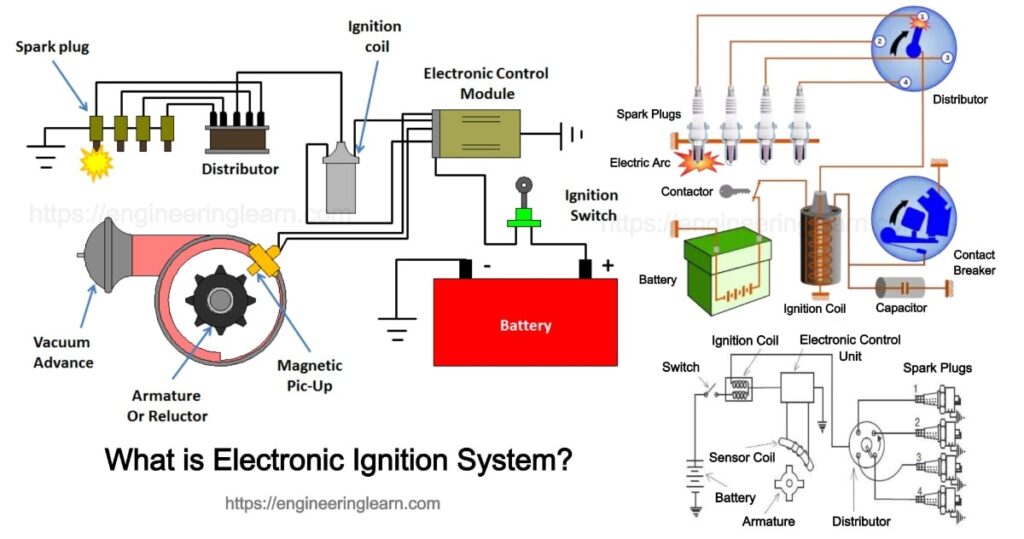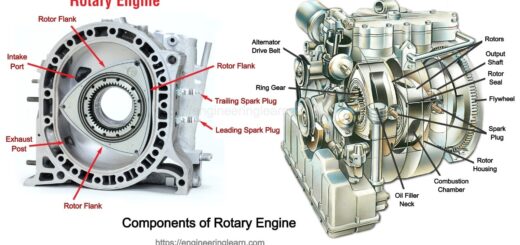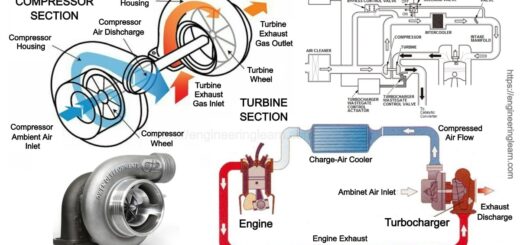What is Electronic Ignition System?

What is Electronic Ignition System? :- Electronic ignition system is quite resurgent these days and is completely controlled electronically and is powered from a battery. It has two terminals, negative and positive. Where the negative terminal is grounded while the positive is connected to the ignition switch.
Now, when the switch is on, the power is supplied to the electronic ignition system through the wires. Thereafter the power is send to the ignition coil which has two winding; primary and secondary winding. The windings are insulated wherein the primary winding is comparatively thicker than the secondary winding. There is a rod which is kept in between the windings in order to generate the magnetic fields. Electronic ignition system is a system which refers to as a type in which there are electronic circuits only, by the transistors which are controlled by the sensors in order to generate electronic pulses. The spark should not be highly intense as it can even burn the mixture and provide lower emission or better economy.
Working of Electronic Ignition System
- In order to understand the working of an electronic ignition system all the components should be connected properly and should by their working order.
- Once the driver is switched on the current from the ignition switch starts flowing from the battery in order to start a vehicle which starts the armature and picks up the coil in order to receive and send the voltage signals from the armature to the ignition module.
- Once the tooth of the rotating reluctor moves in the front of the pickup coil, the voltage signal from the pickup coil is sent to the electronic module which in turn senses the signals & steps the current to flow to form a primary coil.
- There is a change in the voltage signal is sent by pickup coil to the ignition module with a timing circuit fit inside the ignition module which turns on the flow of current. This takes place when the tooth of the rotating reluctor shifts away from the pickup coil.
- Inside the ignition coil a magnetic field is generated due to which a continuous make & break circuit takes place which induces in secondary winding and increases the voltage up to 50,000 volts. After this the high voltage is sent to the distributor, which has a rotating rotor & distributor point which sets the ignition timing.
- In case the rotor comes in front of any distributor point, the voltage jumping through the air gap takes place. It takes place from the gap between the rotor and the distributor point which is then transferred to the adjacent spark plug via high tension cable which is responsible for generating high voltage difference between the central electrode & the ground electrode and is also responsible for generating a spark at the tip of the spark plug.
Advantages of Electronic Ignition System
Here are some merits of an electronic ignition system, which is the foremost reason for it being the most popular:
- It has very few moving parts.
- Very less maintenance cost.
- Generates quite less emission.
- Highly Efficient.
- Increases fuel efficiency.
Disadvantages of Electronic Ignition System
Referring to the merits only is not sufficient there are various demerits of an electronic ignition system which are hereby discussed:
- The system is highly expensive in terms of cost.
This is the only demerit of an electronic ignition system which has been known to the human kind as off now.
Types of ignition system
There are three main types of ignition system which are used in spark-ignition internal combustion engines. Scroll down to learn more about these ignition system.
1. Magneto Ignition System
The magneto serves as the main component in the magneto type ignition system which is used for creating the energy at high voltage. This high voltage is used for generating electricity which is then after used for running vehicles. This system is made by the combination of a distributor and a generator in one single unit. This is what makes it different from a conventional distributor which creates a spark energy without any external voltage.
2. Battery Ignition System
Battery ignition system are widely used in automobiles in order to produce spark with the help of a spark plug and aid of a battery. It was mostly found in 4-wheelers but now is also used in two-wheelers which attain current from a 6-12-volt battery present in the ignition coil.
Components Of Ignition System
Here are some components of different types of the ignition system :
Magneto ignition system: The components of this ignition system has a magneto, a distributor, a capacitor, a cam, contact breaker and ignition switch.
Battery ignition system: The battery ignition system has components like battery, an ignition switch, an ignition coil, a ballast resistor, a contact breaker, a distributor, a capacitor and a spark plug.
Electronic ignition system: The components of an electronic ignition system include a battery, a distributor, a capacitor, an ignition control module, an armature, an ignition coil and a spark plug.
Merits Of Ignition Systems
Here are some merits of an ignition system. Scroll down to learn.
- It is easy and less expensive to maintain a magneto ignition system.
- Occupies less area.
- Does not require a battery.
- Works with high efficiency due to high-intensity spark.
- Emits less
- Increases the efficiency of fuel.
- Battery type ignition systems have a very high intensity of spark.
- It provides high concentration of spark even when the engine speed is low while starting.
- Battery Type Ignition system has less maintenance like all the other types of ignition system.
Demerits of Ignition Systems
Despite having various merits, there are some demerits of an ignition system too. Read the following to know the disadvantages of an ignition system:
- The demerit of a magneto type ignition system is that it has a poor quality of spark at first start.
- Chances of misfiring occur due to leakage.
- The maintenance cost of an electronic types of ignition system is too high which also needs a lot of area and a battery which must be used to power the system.









